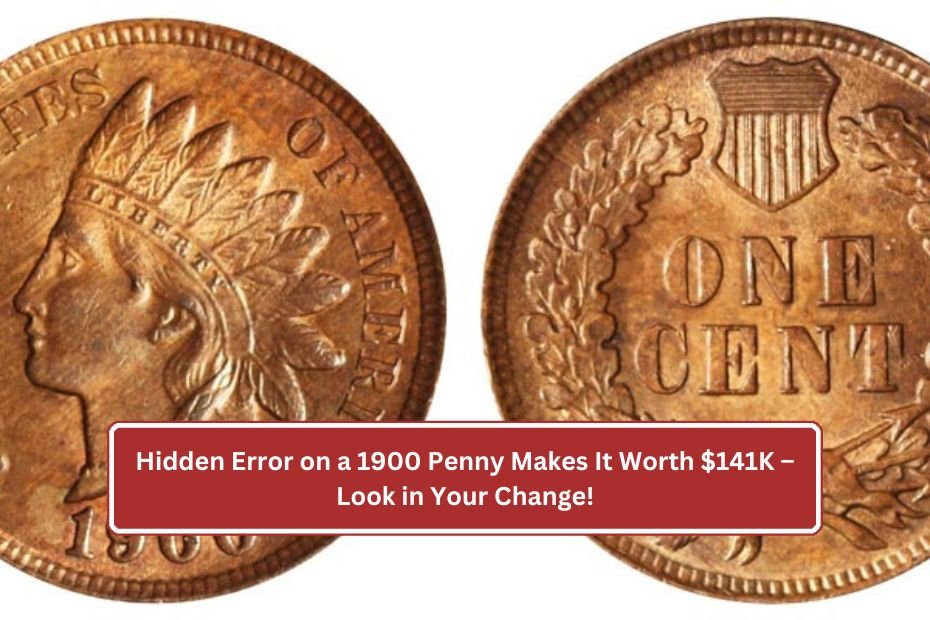If you have old pennies lying around, you might have something valuable! One 1900 Penny sold for a stunning $141,000 because of a rare mint error. Known as the Indian Cent, this penny was mistakenly struck on the wrong type of metal, adding huge value. Let’s explore what makes this coin special and why collectors love finding these rare treasures.
What is the 1900 Penny?
The Indian Cent was first made in 1793, but the U.S. stopped producing it after some time. It wasn’t until the 1850s that the Indian Cent came back into circulation. The 1900 Indian Cent is especially rare because it connects two different centuries of coin production. According to experts, this makes it a prized find in the world of coin collecting.
The Rare Error That Makes It Valuable
The big mistake with this coin is what makes it so valuable! This penny was struck on a gold planchet, usually used for Quarter Eagle coins, instead of the usual mix of copper, nickel, and zinc. This unique error, described by coin expert Richard Snow as “one of the wildest mint errors known,” adds a lot of value. Only a few of these error coins were ever made, and this particular one is graded MS 65, one of the highest grades.
This rare 1900 Penny sold for $141,000 at Heritage Auctions, a famous auction site for collectibles.
Table: Examples of Rare Coins and Their Values
| Coin Type | Unique Feature | Estimated Value |
|---|---|---|
| 1900 Indian Cent | Struck on gold planchet | $141,000 |
| 1889-CC Morgan Dollar | Low mintage, historic connection | $660,000 |
| 1932-D Washington Quarter | Low mintage, Great Depression rarity | $74,400 |
Other Rare Coins That Are Worth Big Money
It’s not only pennies that can be valuable. Collectors will pay large amounts for dimes, nickels, half dollars, and more, depending on certain factors. Here are some other examples of valuable coins:
- 1889-CC Morgan Dollar – Sold for $660,000 due to its low mintage and connection to late 19th-century U.S. history.
- 1932-D Washington Quarter – This quarter, created to celebrate George Washington’s 200th birthday, once sold for $74,400. Released during the Great Depression, few of these coins were saved, making it rare.
Why Coin Grade Matters
Coins with rare errors or low mintage are valuable, but their grade also plays a big role. Coins are graded on a scale from 1 to 70, with 70 being perfect. Grades are based on factors like surface preservation, color, and overall appeal. Higher-grade coins usually sell for much more money.
Conclusion
This unique 1900 Indian Cent shows how valuable a rare coin can be, especially with a one-of-a-kind error. With an error, low mintage, or high grade, coins can sell for thousands of dollars, making them sought-after collectibles. So, the next time you’re looking through your pocket change, take a close look—you might just find a valuable treasure!
FAQ’s
What makes the 1900 Indian Cent so rare?
The 1900 Indian Cent is rare because it was struck on a gold planchet by mistake, adding significant value.
Are all Indian Cents valuable?
Not all Indian Cents are worth a lot. Rare dates, mint errors, or high grades can increase a coin’s value.
How can I find out the value of my coin?
Getting a coin certified by an expert and checking for errors, date rarity, and grade can help determine its value.

